Welcome to an in-depth exploration of newly promoted Ipswich Town’s tactical evolution under the stewardship of Kieran McKenna. This analysis delves into the strategic framework, player movements, and key principles that define McKenna’s football philosophy. From the build-up phase to defensive transitions, we unravel the intricacies of Ipswich Town’s tactical playbook, offering insights into how McKenna’s vision shapes the team’s on-field performances. Join us as we dissect the tactical nuances that have become synonymous with Ipswich Town’s journey under Kieran McKenna’s guidance.
Build-up
Low Build-up
In the low build-up, McKenna sets his team up in a 1-4-2-3-1 formation, with a number-ten positioned slightly to the right and a left-winger that comes inside.
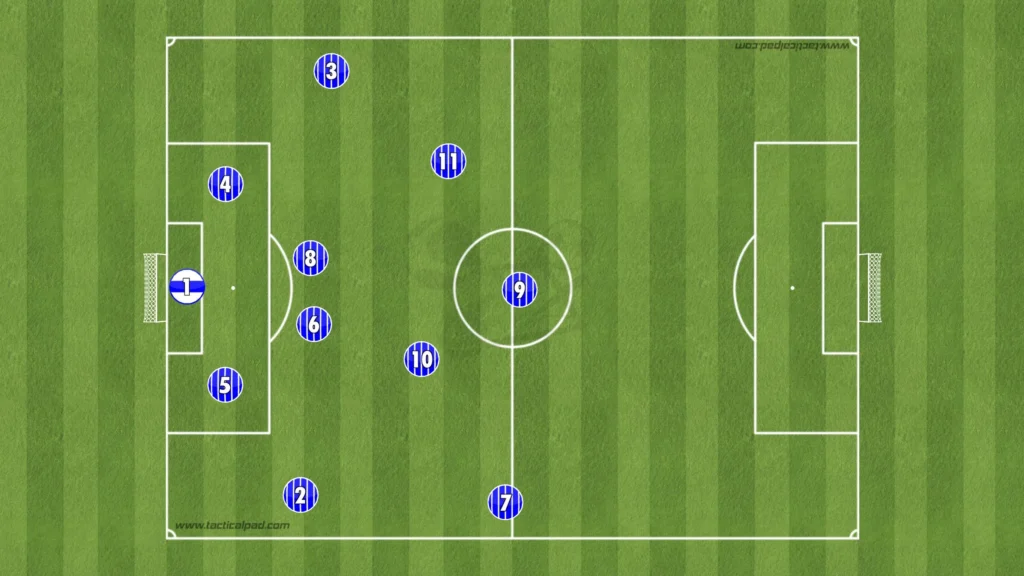
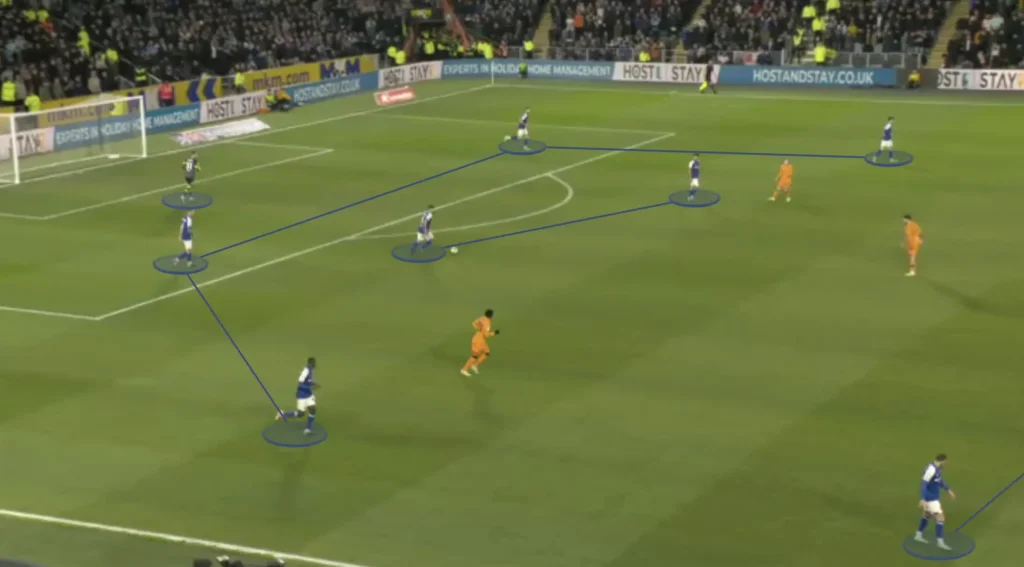
The wingers and number-ten usually drop down low during the low build-up. This allows Ipswich to create numerical advantages and beat the opposition press.
High Build-up
In the high build-up, McKenna’s Ipswich rotates into a 1-3-2-5 formation:
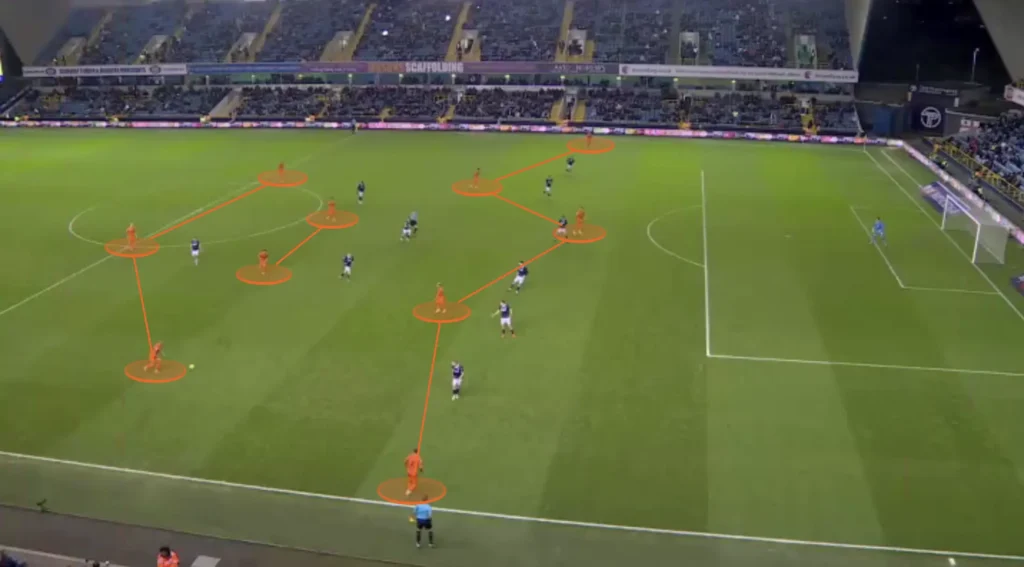
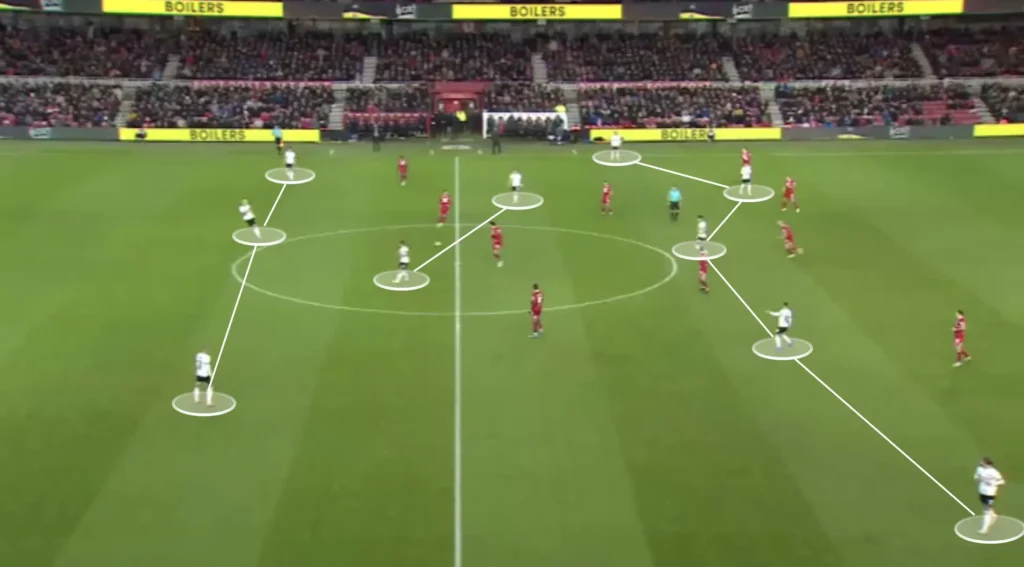
They usually rotate into this formation by pushing the left-back up into a left-wing position, the right-back in as a center-back, and the left-winger into the midfield.
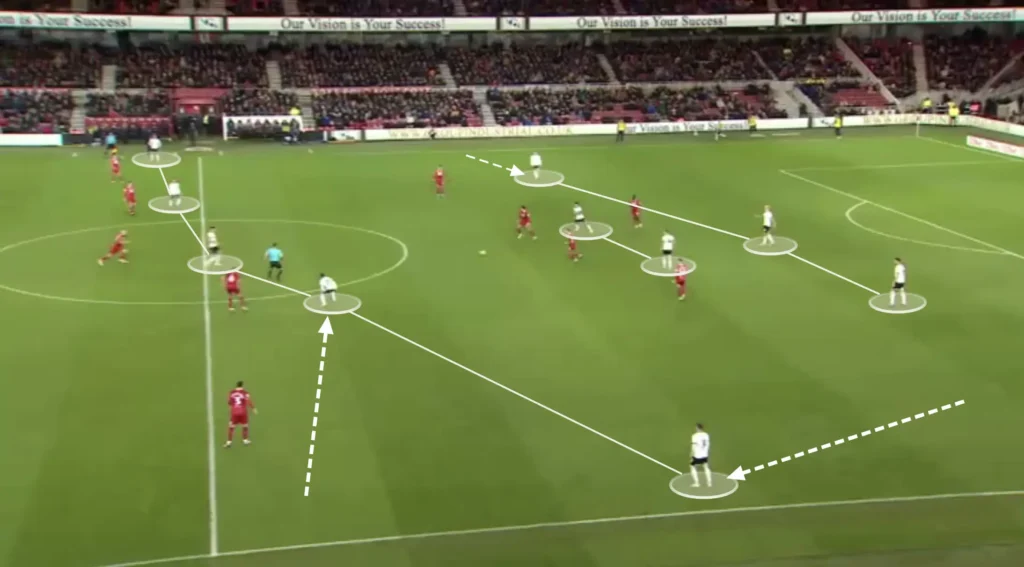
Having four central midfielders(two holding and two attacking) creates more options in the center and less space between the players. McKenna likes this because he prioritizes playing through the middle. He needs one player high and wide to pull apart the backline while the rest create numerical advantages in the midfield areas. This builds good conditions in defensive transitions, allowing more players to press when they lose the ball. Another purpose for keeping many players in the middle is to shorten the distance between them. This shortens the length of the passes, which naturally shortens the time between passes. This means the opposition players will have less time to push up and press, giving the Ipswich players more time and control.
Changing Formation
Ipswich often rotates in their build-up, creating new formations to confuse opponents. They adapt to their opponent’s formation to create numerical advantages in different areas, allowing them to beat the defense and score more goals. Their most frequent formation change is to push one of the center-backs into the midfield, creating a 1-2-3-5 formation. Their principles and general playing style stay the same when they do this.
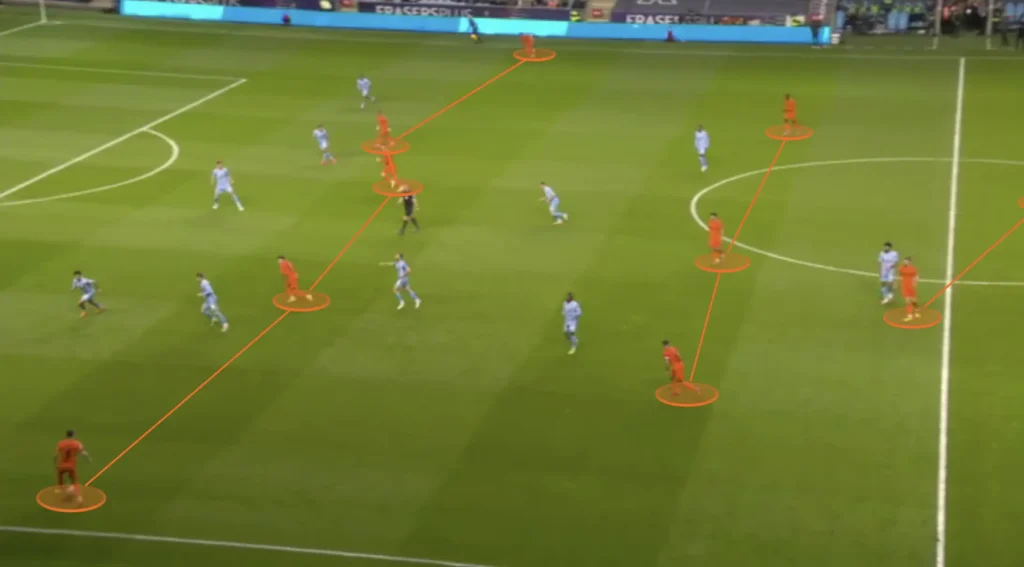
Linking with the Striker
Kieran McKenna likes to create central overloads when attacking the opposition. Therefore, the Ipswich striker often drops during the build-up. When the striker drops, Ipswich unlock more ways of beating the opponent’s defense. They can pass the ball to the striker, who can find an attacking midfielder in the pocket or play a one-touch pass out to the winger.
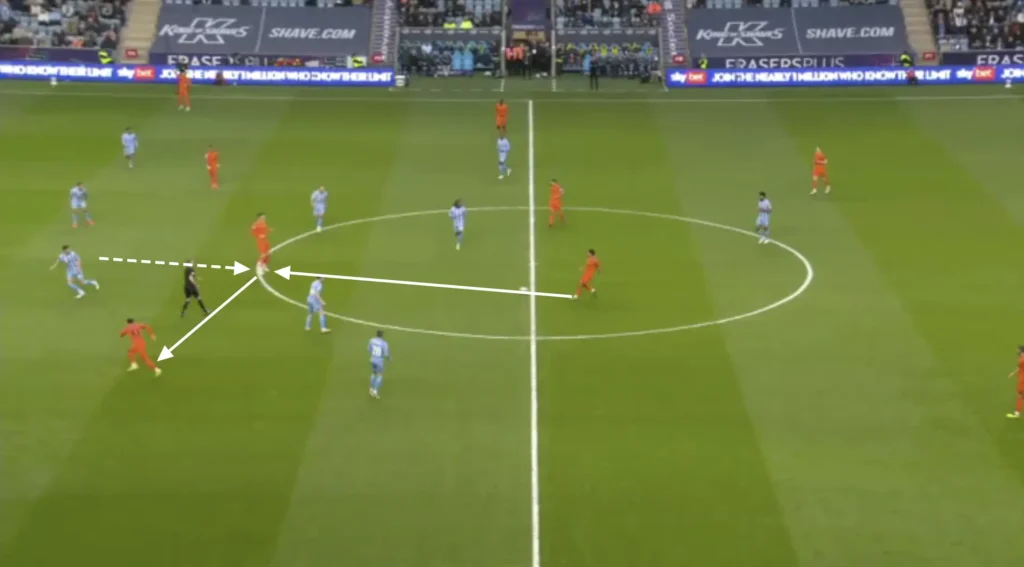
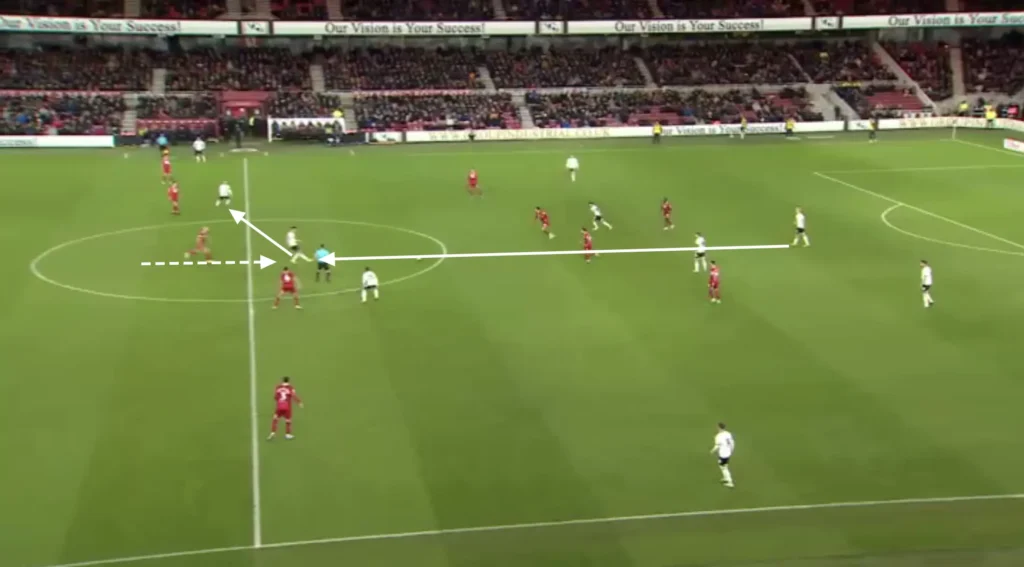
If the center-back pushes up on the striker, the space in behind opens up. When that happens, Ipswich will exploit the space in behind with runs from the attacking midfielders.
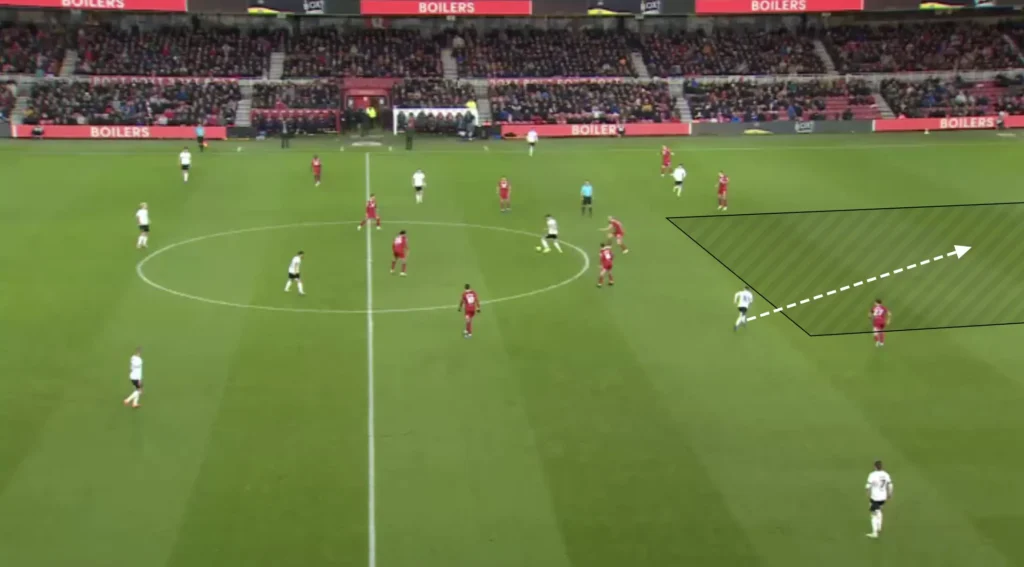
Finding the Pockets
Ipswich always try to find the attacking midfielders in the pockets. Their midfield numerical superiority usually means that at least one will be open. They will look for passes from the back or the wing, breaking lines and finding an attacking midfielder who will turn and drive at the defense.
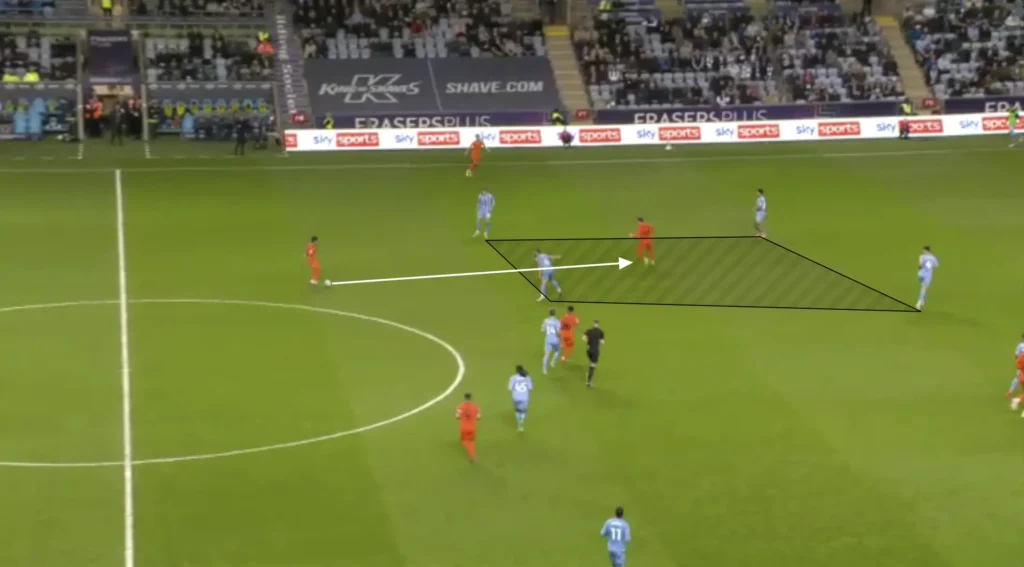
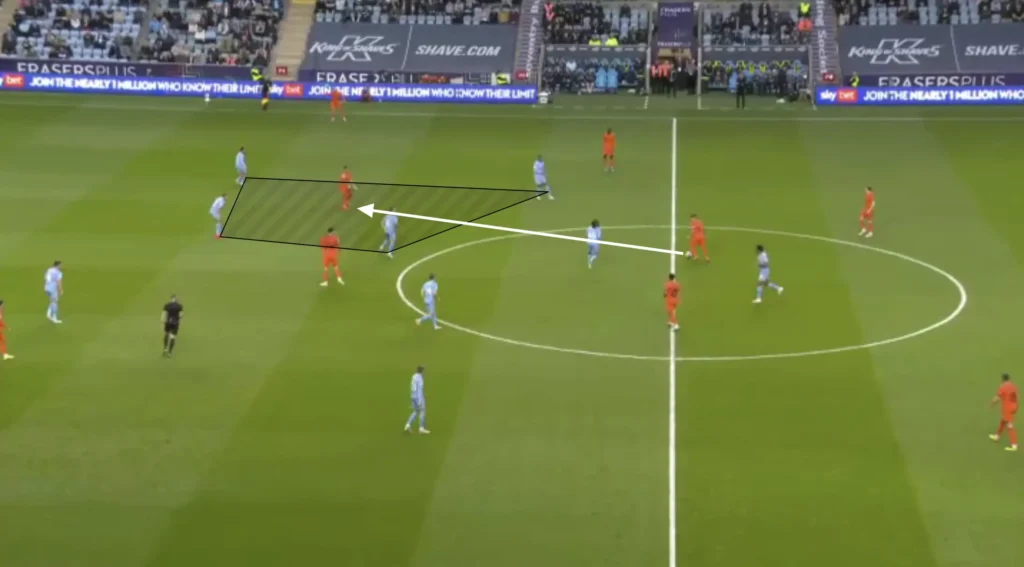
Dropping Outside
The attacking midfielders will also find space by dropping out outside the opposition midfield. The winger, who is positioned high and wide, is pinning the opposition fullback. Pinning means restricting the movement of the defenders. This tactic involves positioning oneself so that the defender is forced to stay close to the attacker, effectively “pinned” to a certain area of the field. By doing so, the attacker creates space elsewhere for their teammates. Here, the pin means that the attacking midfielder can turn and attack the defense when receiving the ball from the backline, without being pressured by the fullback.
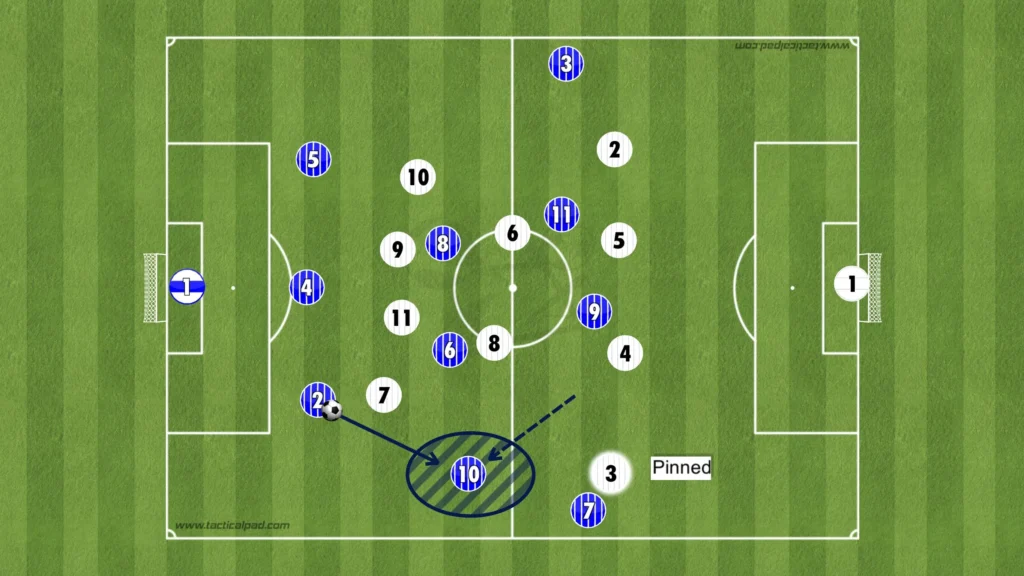
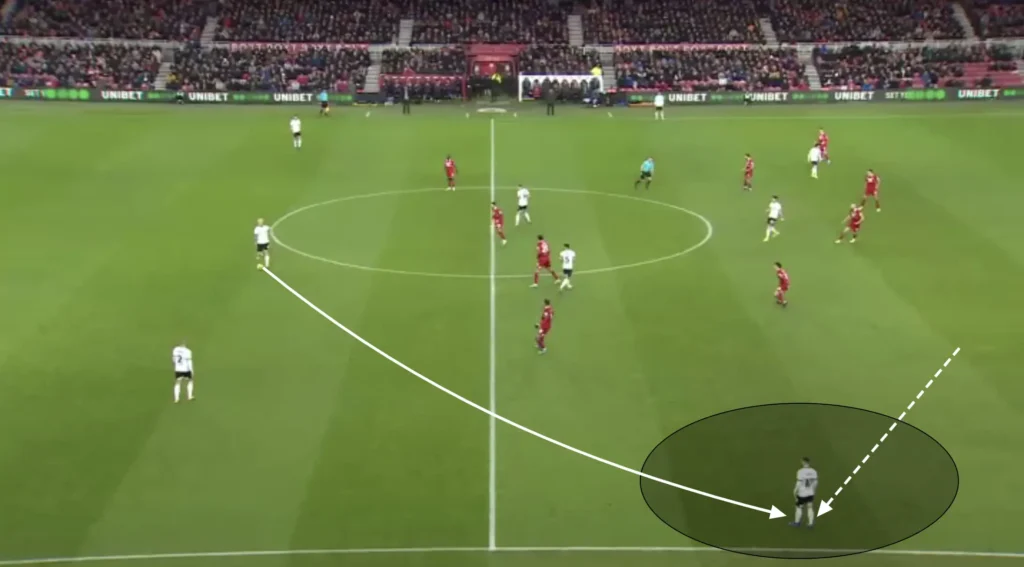
Numerical Advantages
Another massive aspect of Ipswich’s high build-up is their ability to create numerical advantages against the opposition’s defensive line. Their front five naturally becomes numerically superior against a back four, which they are great at taking advantage of.
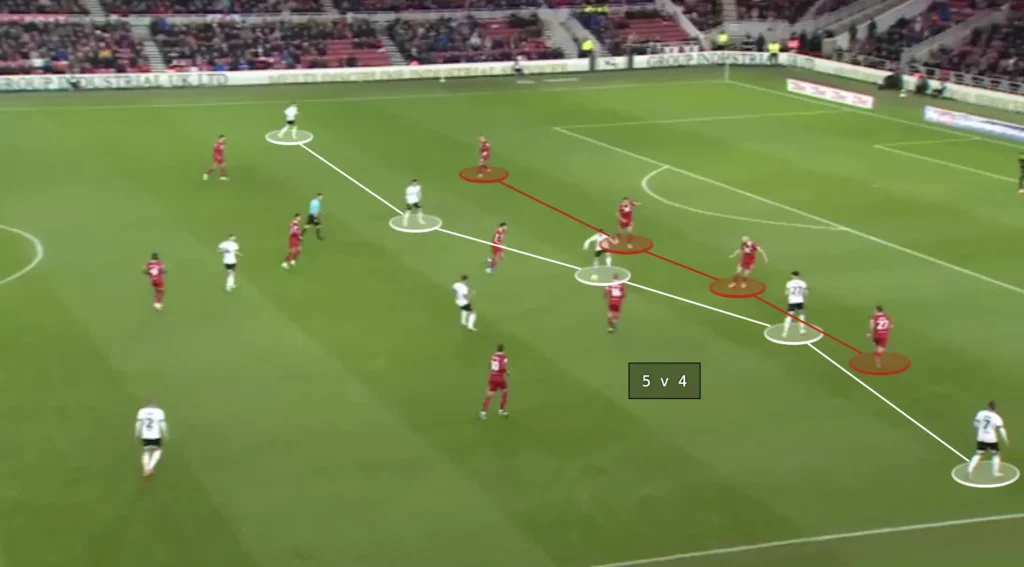
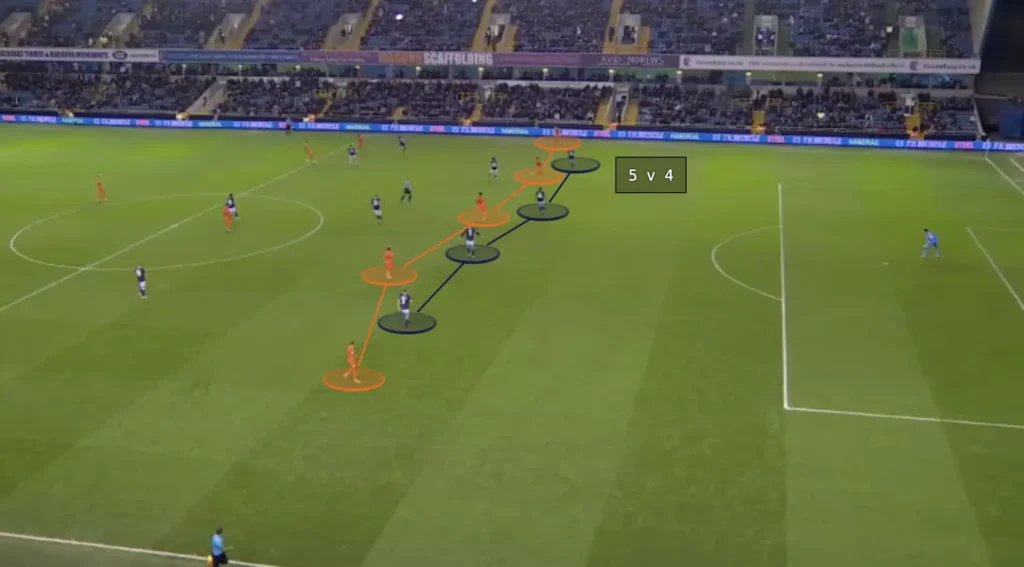
When the defending team is positioned on one side, the weak-side fullback becomes vulnerable to the long switch of play due to the 1v2 against Ipswich’s winger and attacking midfielder. McKenna’s team often capitalizes on this by getting the ball to the winger and creating many opportunities from 2v1 situations on the wing and in the half-spaces.
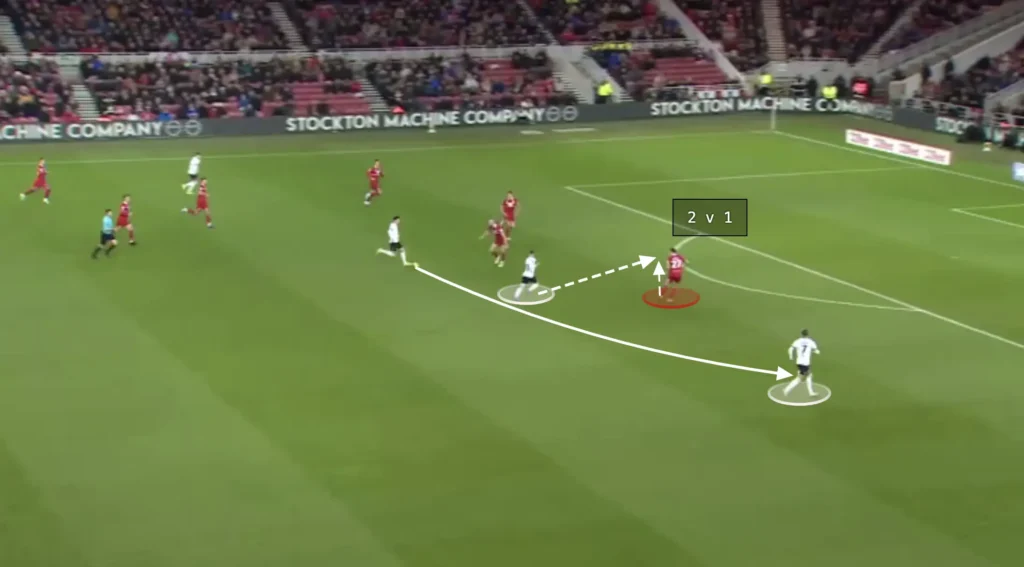
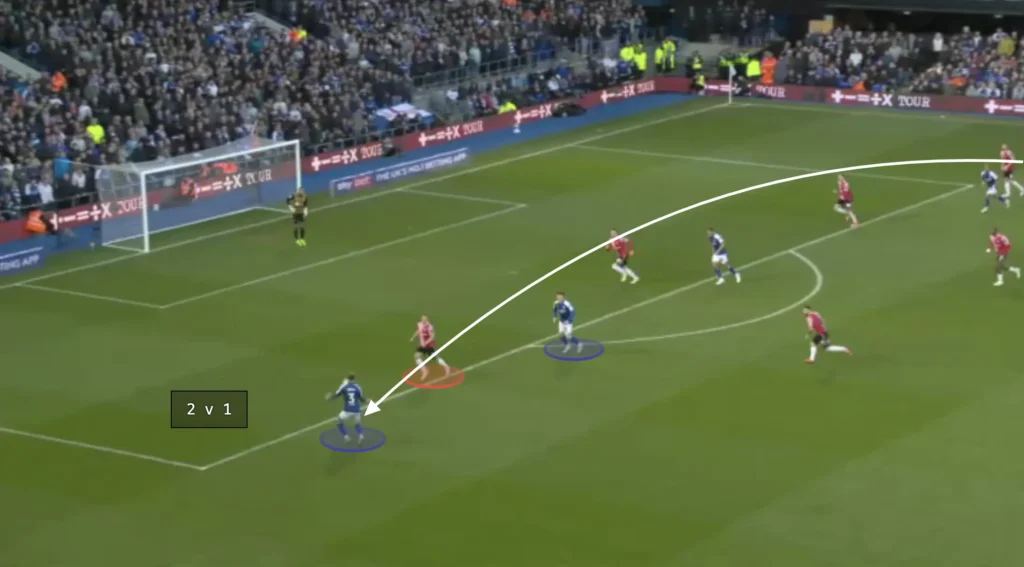
Final Third
Attacking the Half-Space
Ipswich is a great team in the final third. They always create many chances, mainly by attacking the space between the opposition center-back and fullback. They primarily do this from the wide areas with underlaps from the attacking midfielders or sometimes the wide center-backs.
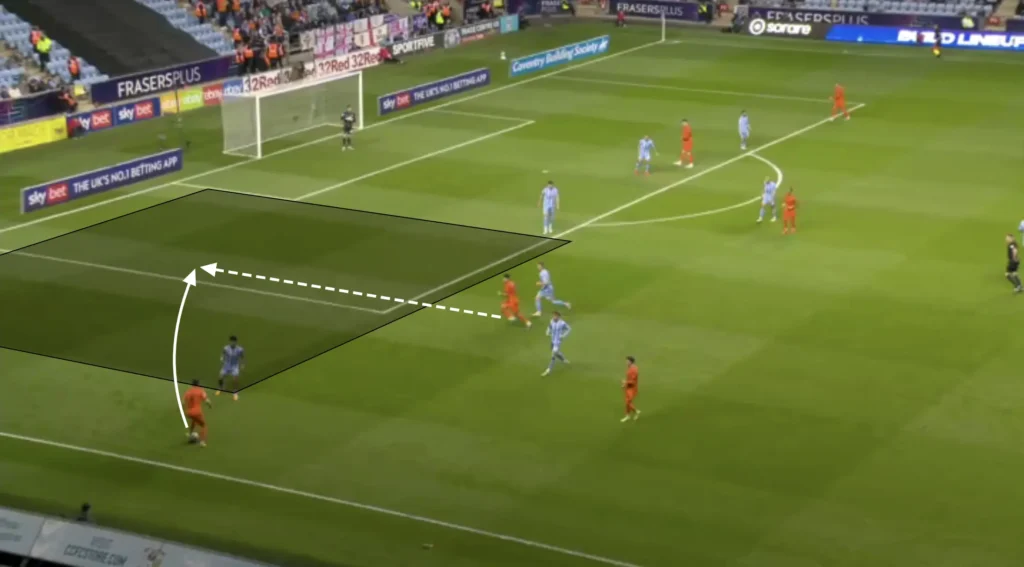
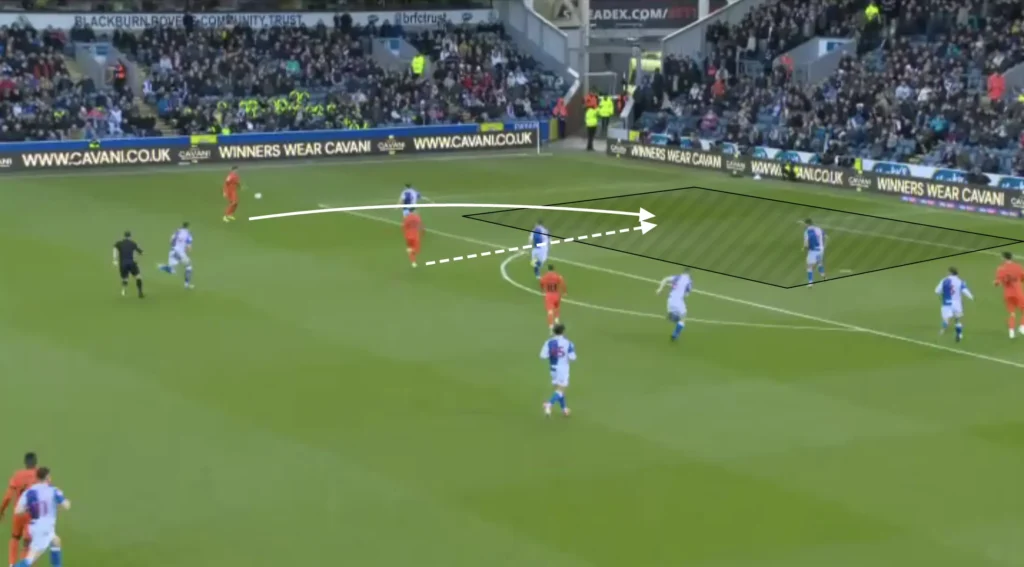
The winger can either play the ball to the underlapping player, who can cross to a teammate in the box, or take the ball inside to combine with an attacker or shoot.
Overlaps
Ipswich also uses overlaps to produce opportunities in the final third. When the winger gets the ball, an Ipswich player quickly makes the overlap, creating a 2v1 on the wing. If the opposition fullback drops to cover the overlapping run, the winger could cut inside, taking a shot or combining with a midfielder. If the fullback covers the center, the ball can easily be played to the overlapping player, creating a crossing opportunity.
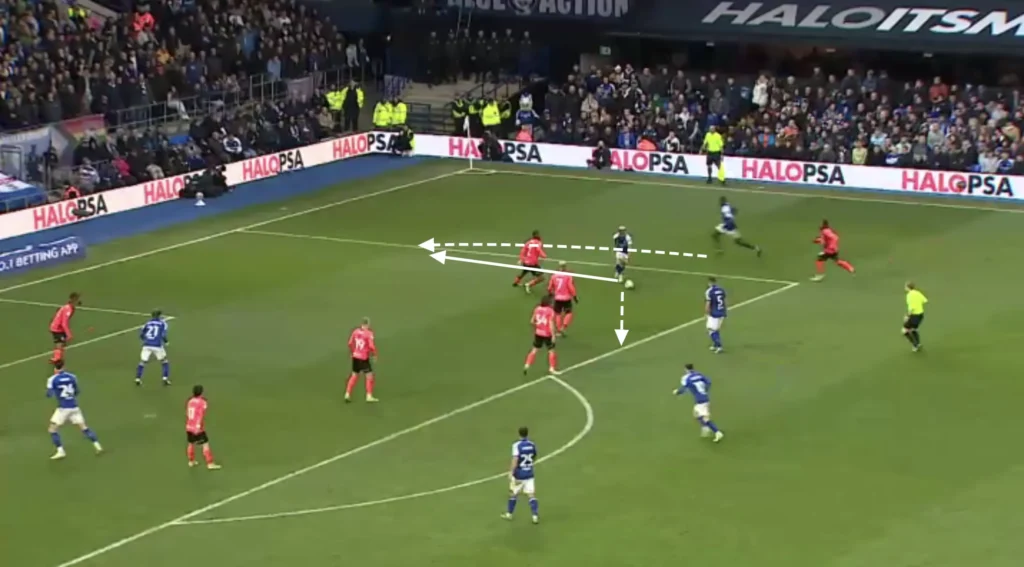
Many Players in the Box
The attacking midfielders and wingers always look to make runs into the box when the ball is in the final third, often getting four or five players into these areas to create overloads. The numerical advantages in the box force the defending team to make decisions and leave some players open.
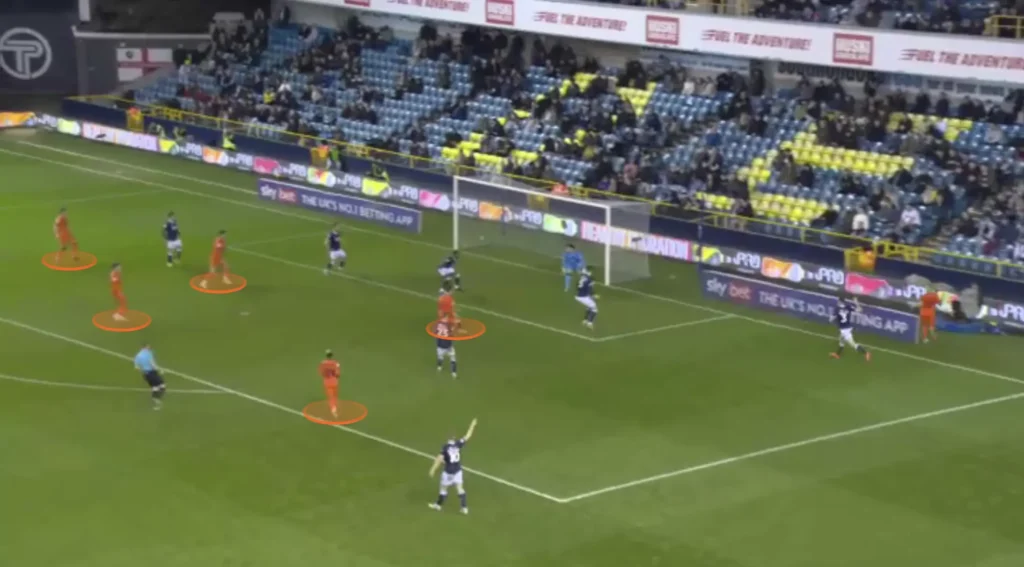
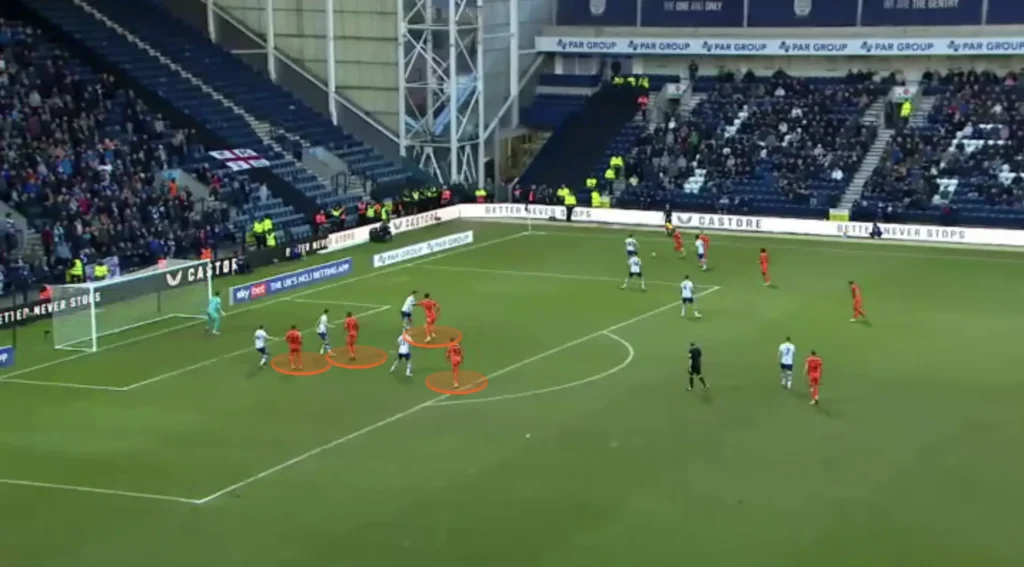
Ipswich score many of their goals from crosses to the wingers at the back post. The opposition fullback will often be preoccupied with an Ipswich attacking midfielder, which leaves massive space at the back post for the wingers to attack.
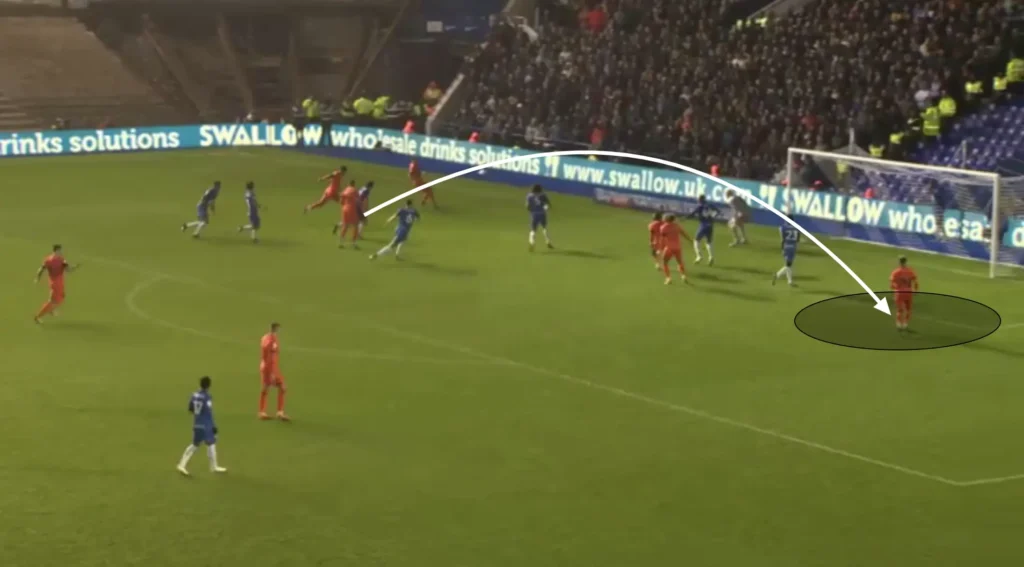
McKenna also positions many Ipswich players outside the box, ready for the second balls and cut-backs. They always succeed in pushing down the opposition’s defense, which opens the space in front of the backline. Ipswich will often find their midfielders in these spaces, who can shoot or combine with an attacker to create goalscoring opportunities.
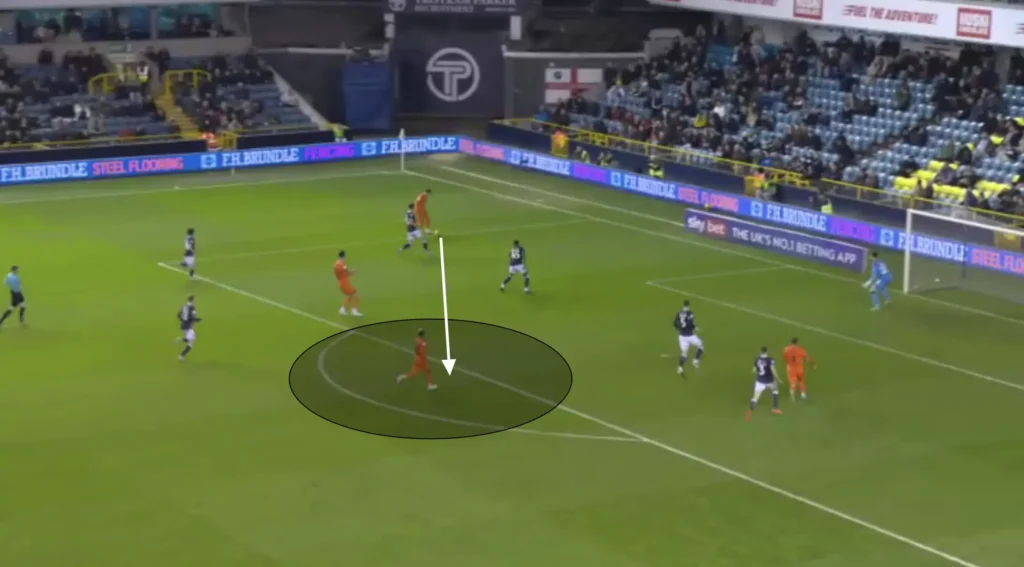
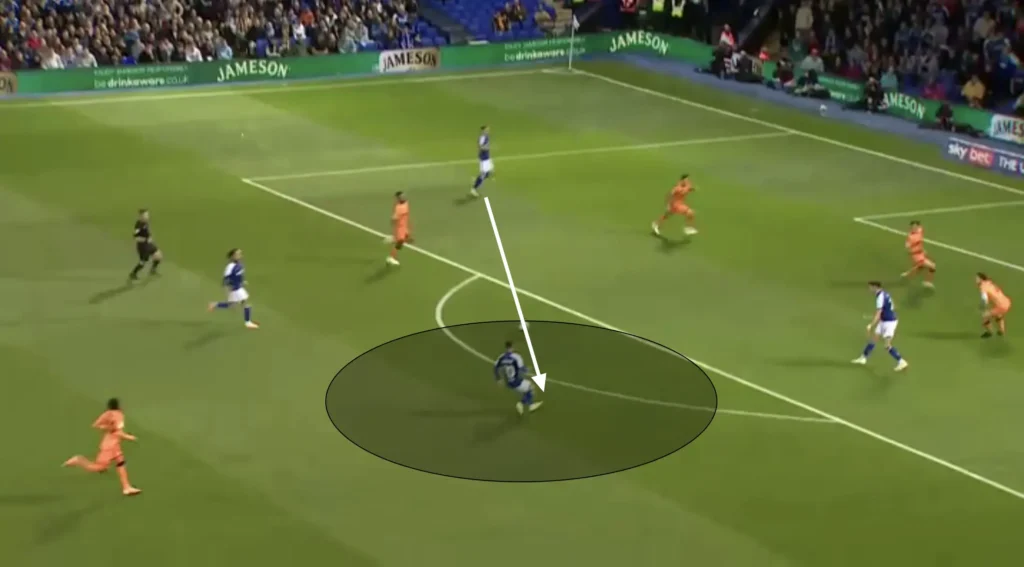
Defending
High Press
McKenna’s Ipswich presses the opposition high when possible and does so in a 1-4-2-3-1 formation. The front four usually tilt to the right side, with the left-back coming up to support on the left side.
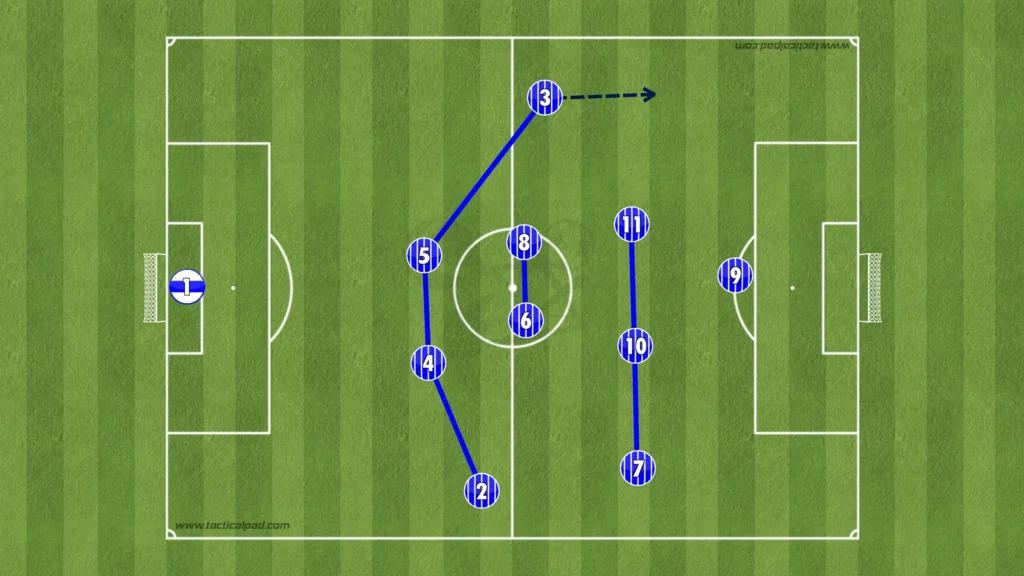
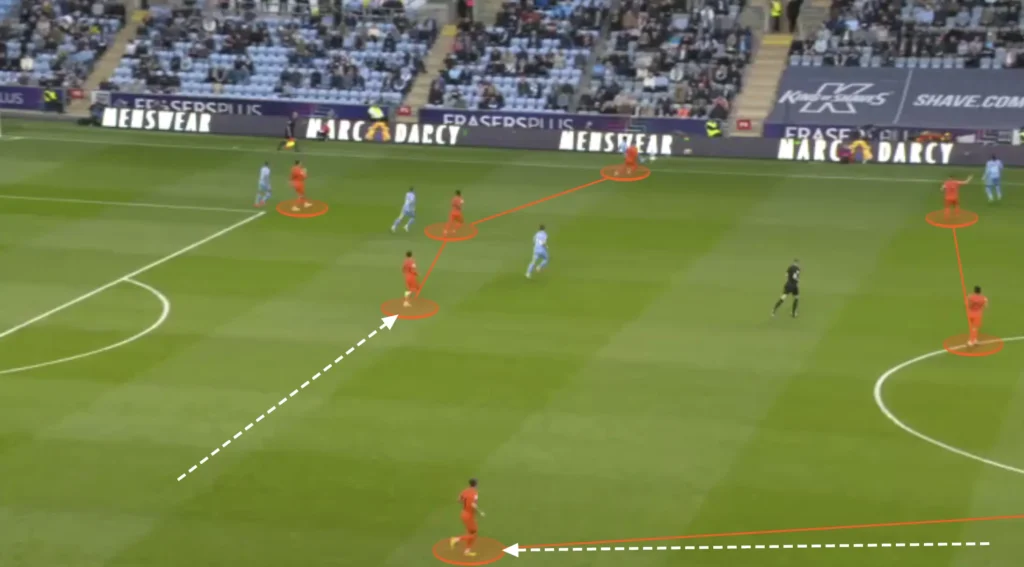
They do this to overload the right side, aiming to win the ball when it gets played there. To get the opposition to play the ball to their left side, the striker will make an angled run to close the passing lane to the right center-back. This forces the left center-back to take the ball forward, which usually results in Ipswich winning the ball through their right-sided overload. The Ipswich left-back is also positioned higher than the rest of the backline to be ready for the long ball to the opposition right-back. This closes off another right-sided option for the opposition, which makes it even more difficult for them to find ways through the Ipswich press.
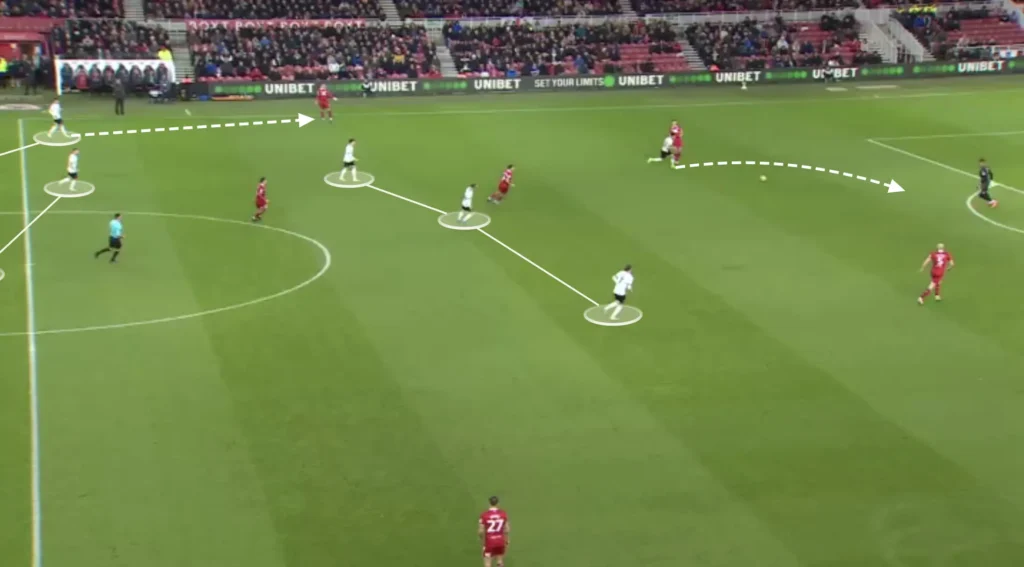
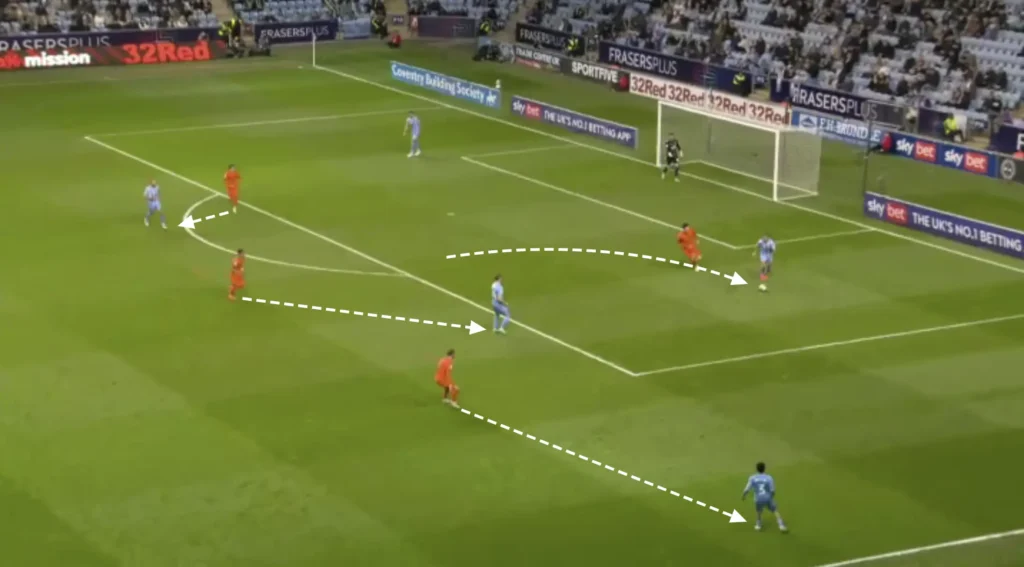
Low Press
McKenna’s Ipswich uses a 1-4-4-2 formation in the low press. They look to set up in a mid-block, always trying to close the center, forcing the opposition out wide.
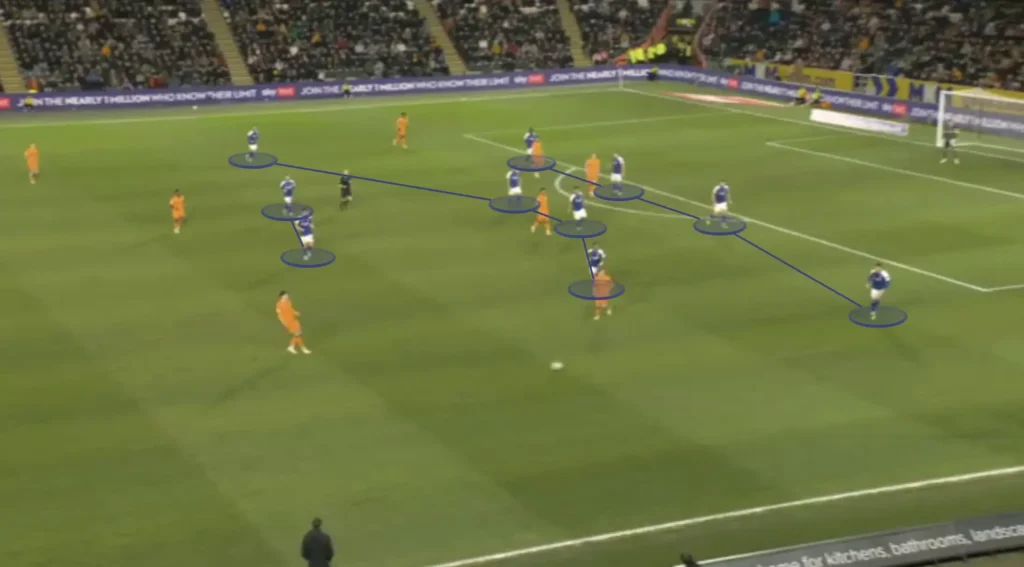
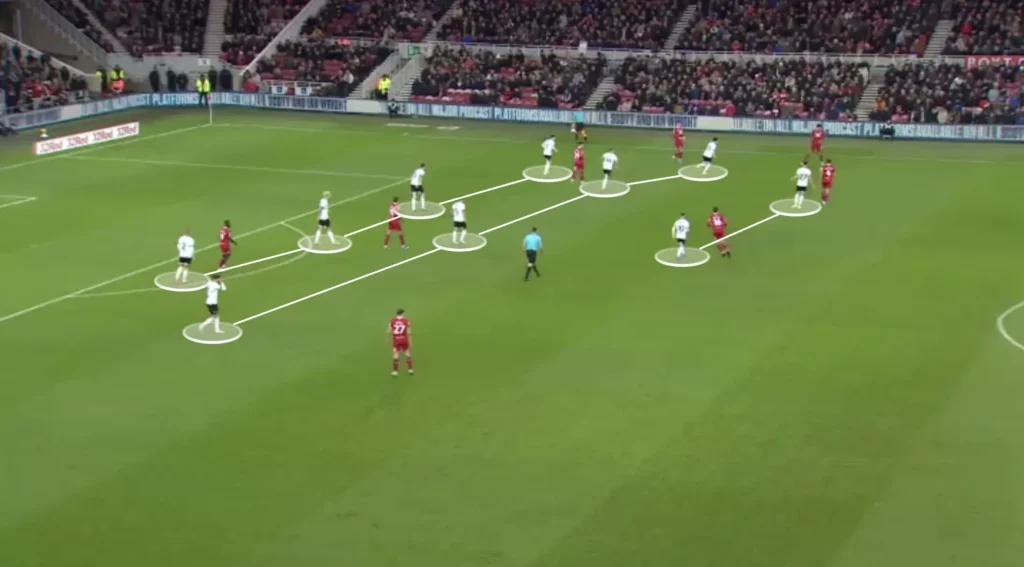
Ipswich always look to squeeze the pitch when defending. This means constantly pushing the team up as much as possible. Every time the opponent plays a slow, sideways pass or a back pass, Ipswich’s first line of pressure pushes up, with the rest of the team following to stay compact. When the next pass comes, they push up even more, forcing the opponent back even more. They do this because it pushes the opponent further away from the Ipswich goal, making it harder to create chances.
Defensive Transitions
Positioning many players centrally, creating a numerical advantage in the midfield, creates good conditions in defensive transitions. Having many players close to the ball after losing possession means that many players can work towards regaining possession. McKenna’s team, therefore, often regains possession directly after losing it.
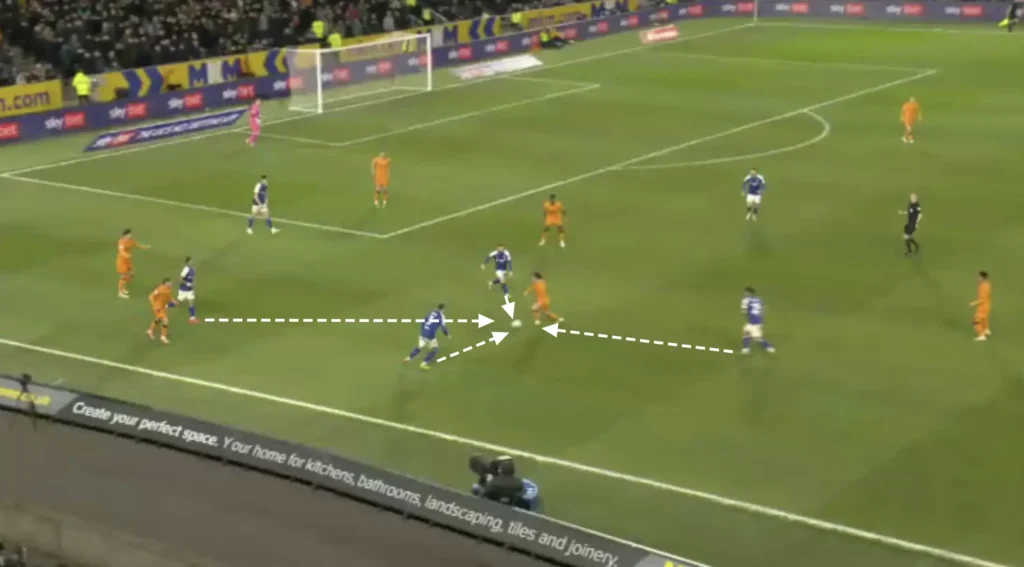
Final Thoughts
In wrapping up this tactical analysis of Ipswich Town under the stewardship of Kieran McKenna, it’s evident that a distinctive tactical evolution is underway at Portman Road. McKenna’s influence is palpable, with the team showcasing a blend of structured organization and creative freedom on the pitch. From the meticulous build-up play to the astute defensive transitions, Ipswich Town under McKenna’s guidance is a team to be reckoned with.
The emphasis on player development and tactical versatility shines through in Ipswich’s performances, reflecting McKenna’s commitment to nurturing a cohesive and adaptable squad. When the next season starts, fans can anticipate further refinements and strategic innovations as McKenna continues to imprint his vision on the team.
Ultimately, this analysis offers a glimpse into the tactical intricacies that define Ipswich Town under Kieran McKenna’s leadership, signaling a promising future for the club as they navigate the challenges of the season ahead.
